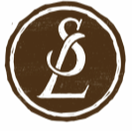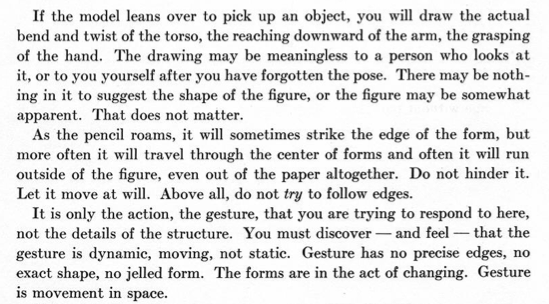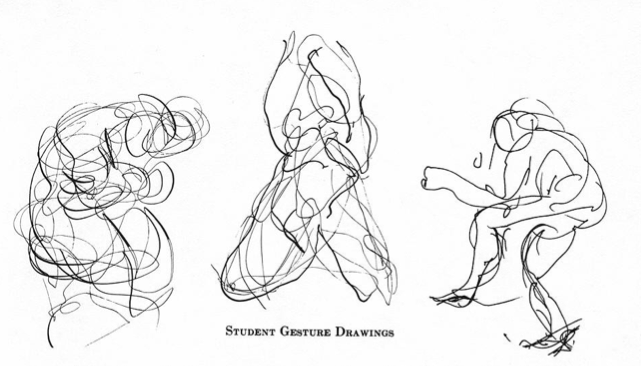|
OK, so I have to say--that last exercise has been my favorite so far. I just think scribbling is so FUN. And I have always thought better in shapes rather than in lines. And, while I was having all that fun scribbling, I was also seriously thinking about what I was drawing, and understanding it a little bit better. So basically, modelled drawings are the best. Also, a heads up--this October I am planning to do the full Inktober challenge. I may decide that it is going well and that I will have time to post, but as of now the plan is to only do TWO of these drawing exercises in October, or every other week. I feel that that way I can still keep my momentum with these exercises without overloading myself. So, this week's exercise will cover two weeks. Each week when it comes time to write up a new exercise, I go to my master plan and re-order the exercises I have outlined. I don’t think that's a bad thing. As I have actually sat down to do each exercise, I understand its benefits better, and also how it relates to the others. So far, we have done Pre-Instruction Drawings, Negative Space Drawings, Blind Contour Drawings, and Modeled Drawings. I feel that the natural next step from there (though I didn’t see it before) is Gesture Drawings. I’m really bad at gesture drawing. At least, I have always felt that way. (So of COURSE it would fall on the two-week-long space…) However, I think that may partially be due to the fact that in school I was gesture drawing next to people who learned from the amazing Ryan Woodward (though I never got to be in one of his classes--I was in illustration, not animation, which are DIFFERENT). He draws amazing gestures really quickly that also actually look like people. *sigh* But (again) coming back to Nicolaides’ book The Natural Way to Draw (this is our last exercise from that book, by the way) I saw that I could loosen up and just draw a gesture and not worry about whether it looked good or not. Because the important thing about gesture drawing is capturing the movement, not the form. And (unless your name is Ryan Woodward) they are for study, not for show. And I will say this--as jealous as I am of Ryan Woodwards amazing skill in drawing accurate gesture drawings, he doesn’t sacrifice an understanding of movement for accuracy. Behold: I love the way that Nicolaides described the process of gesture drawing: I can’t get a quick, even somewhat accurate drawing in less than a minute--but I can draw a loose set of lines and scribbles that represent the movement of the figure. So can you ;-)
The tricky thing about gesture drawing is that we’re adding another dimension--which we have been doing with each exercise. Negative space drawings are pretty two dimensional, even when drawing from life. With blind contour drawings we start to think about three dimensions, but with Modeled drawings we really push that idea further and are really focusing on how a form occupies space. Gesture drawings focus on movement. Movement has to happen over time. So, in our flat unmoving drawing, we are trying to get across the idea of this four-dimensional event. The other tricky thing about gesture drawing is that we all (including me) get caught up in the idea that drawings ought to look like someTHING. We can argue about whether a gesture is a “thing”, (it is certainly a noun, but isn’t a person or place--so is it a thing, or an idea?) but while it is done by something solid, the gesture itself is not. But even though it isn’t solid, and arguably isn’t a “thing”, you can still draw it. (One of these days I’m going to do my whole spiel on how abstract and representational art are more closely related than most people think. But not today.) Exercise: Gesture Drawings Goal/Focus: seeing movement, making quick decisions, sketching on-the-go Materials: Sketchbook and pen or pencil Assignment: Every day, spend at least 20 minutes doing gesture drawings. These should be quick, no longer than 2 minutes apiece. Draw impressions of the movement of people or animals or things. Focus on ACTION, not edges or details. Think through the action as you draw it--what came before, what will come next? It may help to think of an attitude or feeling--tired, happy, angry, scared, etc. Choose curved or straight lines depending on the action. AT LEAST once (but hopefully more), go to a park, playground, sports game, dance class, pool, zoo, or mall, (anywhere people or animals are moving in fast, dynamic poses) to draw from life. Other days you can use photos, figure drawing websites (just search gesture drawing or figure drawing. Here is one I have used, but there are others.) Have fun!
0 Comments
Leave a Reply. |
Your email will not be shared with anyone. It will only be used for updates from me, and you can unsubscribe at any time.
Categories
All
|








 RSS Feed
RSS Feed